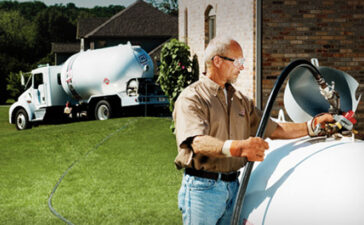- Understanding Pest Control Products
When it comes to dealing with pests, having a good understanding of the different pest control products available is essential. There are various types of pest control products, each designed to tackle specific pest problems. By knowing the options available, you can make an informed decision on which product will work best for your specific situation.
1.1 Different Types of Pest Control Products
Pest control product can be categorized into different types based on their mode of action and form. The most common types include insecticides, rodenticides, repellents, and traps.
Insecticides are chemicals designed to kill or control insects. They come in various forms such as sprays, dusts, baits, and granules. Rodenticides, on the other hand, are specifically formulated to eliminate rodents like rats and mice. Repellents are products that deter pests from entering a specific area, often by emitting strong scents or creating unfavorable environments. Traps are devices that capture and hold pests, preventing them from causing further damage.
1.2 How Pest Control Products Work
Pest control products work in different ways depending on their active ingredients and target pests. Insecticides, for example, can act as nerve poisons, disrupting the nervous system of insects and ultimately leading to their death. Other insecticides may interfere with the insect’s reproductive cycle, preventing them from laying eggs or hatching larvae.
Rodenticides, on the other hand, usually contain anticoagulant chemicals that cause internal bleeding in rodents. Repellents work by creating a scent or taste that pests find unpleasant, deterring them from entering the treated area. Traps, on the other hand, physically capture pests and prevent their movement, allowing for their safe removal or disposal.
1.3 Factors to Consider Before Choosing a Pest Control Product
Before choosing a pest control product, there are several factors you need to consider. These include the type of pest you are dealing with, the severity of the infestation, the targeted areas for pest control, and any safety or environmental concerns you may have.
Identifying the pest problem correctly is crucial for choosing the right product. Different pests may require different approaches, so knowing the specific pest will help you narrow down your options. Additionally, the severity of the infestation will determine whether you need a more aggressive treatment or if a milder solution will suffice.
Considering the targeted areas for pest control is important as well. Some products may be more suitable for indoor use, while others are designed for outdoor applications. Lastly, taking into account safety and environmental impact is crucial to ensure you are choosing a product that is effective yet safe for your family, pets, and the environment.
- Assessing Your Pest Control Needs
Assessing your pest control needs involves a thorough evaluation of the pest problem at hand. This step is crucial for developing an effective pest control strategy and choosing the most appropriate products to use.
2.1 Identifying the Pest Problem
The first step in assessing your pest control needs is to correctly identify the pest problem. In many cases, the presence of pests can be obvious, but sometimes it may be challenging to determine the exact type of pest infestation. In such cases, it may be helpful to consult a professional pest control service or use online resources to aid in identification.
Identifying the exact pest will help you understand its behavior, biology, and the most effective control methods for that specific pest. For example, if you are dealing with a termite infestation, you would need to choose products specifically designed for termite control.
2.2 Assessing the Severity of the Infestation
Once you have identified the pest, it is important to assess the severity of the infestation. This will help determine the level of control required. For minor infestations, a targeted approach using low-toxicity products may be sufficient. However, for severe infestations or persistent pest problems, a more aggressive and comprehensive approach may be necessary.
Assessing the severity of the infestation will also help you decide if you can handle the pest control process on your own or if you need to enlist the help of a professional pest control service. Certain pests, such as bed bugs or severe termite infestations, often require professional treatment to fully eliminate the problem.
2.3 Determining the Targeted Areas for Pest Control
Next, you need to determine the targeted areas for pest control. This involves identifying the specific areas where pests are causing the most damage or posing the greatest risk. Common areas for pest control include kitchens, basements, attics, outdoor perimeters, and gardens.
By determining the targeted areas, you can focus your pest control efforts and choose products that are appropriate for those specific areas. For example, if you have a problem with ants in your kitchen, using ant baits or sprays specifically designed for indoor use would be the most effective approach.
- Choosing the Right Pest Control Product
Now that you have assessed your pest control needs, it’s time to choose the right pest control product. There are various factors to consider when selecting a product, including the type of pest control solution, the pros and cons of different products, and their safety and environmental impact.
3.1 Natural and Chemical Pest Control Products
Pest control products can be broadly categorized into natural and chemical options. Natural pest control products are typically derived from plant extracts, essential oils, or other naturally occurring substances. These products offer a more environmentally friendly alternative to chemical-based products and are generally considered safer for use around humans and pets.
Chemical pest control products, on the other hand, are formulated using synthetic chemicals that are designed to effectively control pests. These products tend to provide quicker and more potent results in many cases, but they may also pose higher risks to humans, pets, and the environment.
When choosing between natural and chemical pest control products, it is important to consider your preferences, the severity of the infestation, and any safety concerns you may have. Natural products may be suitable for mild infestations or for individuals who prefer a non-chemical approach. However, for severe infestations or stubborn pests, chemical-based products may be more effective.
3.2 Pros and Cons of Different Pest Control Solutions
Within each category of pest control products, there are various solutions available, each with its own pros and cons. Some products may offer a quick knockdown effect, instantly killing pests upon contact, while others may have a residual effect, providing long-term control.
For example, aerosol sprays are popular for quick and direct control of flying insects, but they may not offer long-lasting protection. Baits, on the other hand, are effective for attracting and killing pests over time, but they require patience and consistency.
Understanding the pros and cons of different pest control solutions will help you choose the most suitable product for your needs. Consider factors such as application method, efficacy, duration of control, and any specific precautions or safety measures required for each solution.
3.3 Evaluating the Safety and Environmental Impact
When choosing a pest control product, it is crucial to evaluate its safety and environmental impact. Some products may pose risks to humans, especially if not used according to the instructions. It is important to read and follow all label directions carefully.
Additionally, consider any potential environmental impact the product may have. Certain chemicals may be toxic to beneficial insects, birds, or aquatic life. Choosing products with low toxicity or opting for natural alternatives can help minimize the impact on the environment.
If you are unsure about the safety or environmental impact of a specific product, consult the manufacturer or seek advice from a professional pest control service.
- Tips for Effective Pest Control
Once you have chosen the right pest control product, there are several tips and strategies you can employ to ensure its effectiveness and maximize your pest control efforts.
4.1 Proper Application Techniques
Proper application techniques are crucial for ensuring the effectiveness of the pest control product. Follow the instructions provided by the manufacturer carefully, paying attention to dosage, application method, and any specific precautions.
For example, some products may require dilution before use, while others may need to be applied directly to specific areas or surfaces. Applying the product incorrectly or using too little or too much can affect its efficacy.
It is also essential to consider safety measures during application, such as wearing protective clothing, gloves, or masks if necessary. These precautions will help minimize any potential risks associated with the product.
4.2 Maintenance and Prevention Strategies
Pest control is not a one-time solution but requires ongoing maintenance and prevention strategies. Even after successfully eliminating pests, it is important to take steps to prevent future infestations.
Regular cleaning, proper sanitation, and sealing entry points can help prevent pests from gaining access to your property. Additionally, removing potential food and water sources for pests can discourage them from establishing a presence.
Maintaining a tidy and organized environment both indoors and outdoors can also make it less attractive for pests to take up residence. Regularly inspecting and repairing any cracks, holes, or damaged structures can further prevent pest entry.
4.3 Working with Professionals for Pest Control
If you are dealing with a severe infestation or have concerns about handling pest control on your own, it is advisable to seek the assistance of professional pest control services.
Professional pest control experts have the knowledge and experience to effectively deal with various pests and can provide targeted treatments for your specific situation. They also have access to specialized products and equipment that may not be available to the general public.
Working with professionals can provide peace of mind, ensuring that the pest problem is tackled efficiently and effectively, reducing the risks of reinfestation.
By following these comprehensive guidelines and considering all the factors mentioned, you can confidently choose the perfect pest control product that best fits your needs. Remember, effective pest control is not only about eliminating pests but also about maintaining a safe and healthy environment for you and your loved ones.
FAQ
Question: What are the different types of pest control products? – Pest control products can be categorized into different types such as insecticides, rodenticides, repellents, and traps.
Question: How do pest control products work? – Pest control products work in different ways depending on their active ingredients and target pests. Insecticides can act as nerve poisons or disrupt the insect’s reproductive cycle. Rodenticides contain chemicals that cause internal bleeding in rodents. Repellents create unpleasant scents or tastes for pests. Traps physically capture pests.
Question: What factors should I consider before choosing a pest control product? – Before choosing a pest control product, consider the type of pest, severity of the infestation, targeted areas for control, and any safety or environmental concerns you may have.
Question: How do I assess my pest control needs? – Assess your pest control needs by identifying the pest problem, assessing the severity of the infestation, and determining the targeted areas for control.
Question: How do I choose the right pest control product? – Consider natural vs. chemical options, the pros and cons of different solutions, and the safety/environmental impact when choosing a pest control product.
Question: What are the pros and cons of natural and chemical pest control products? – Natural pest control products are environmentally friendly but may be less potent. Chemical pest control products provide quicker and more potent results but may pose higher risks.
Question: How can I ensure effective pest control? – Ensure effective pest control by properly applying the product using the recommended techniques, implementing maintenance and prevention strategies, and considering professional pest control services for severe infestations.
Question: How can I prevent future pest infestations? – Prevent future pest infestations by regularly cleaning, practicing proper sanitation, sealing entry points, removing food and water sources, and maintaining a tidy environment.









